William S. Burroughs

Writer • Artist
Birth Date: February 5, 1914
Death Date: August 2, 1997 — 83 years old
Birth Place: St. Louis, Missouri
Though he was considered "the Godfather of the Beat Generation," William S. Burroughs had little in common with the sons of immigrants who established themselves post-war as America's first unique literary movement. Born into upper middle class affluence, Missouri native Burroughs was influenced by his occult-obsessed mother and a family cook who filled his head with tales of Irish witchcraft. A voracious reader of pulp novels, the teenage Burroughs idolized the gangsters of the Jazz Era while a serious injury treated with morphine gave him a taste for opiates.
In New York during World War II, he made the acquaintance of Allen Ginsberg and Jack Kerouac, soon to break out as guiding lights of the nascent Beat movement. A looming prison sentence for drug trafficking chased Burroughs and his family to Mexico, where he shot his companion, Joan Vollmer, dead in a parlor prank gone wrong. Losing both his companion and custody of his son, Burroughs paradoxically found his voice as a writer and published his masterpiece, Naked Lunch, in 1959.
The darkly satirical novel prompted a highly publicized obscenity trial in America, making Burroughs a cause célèbre and stamping him as an outlaw chronicler of atomic age alienation, whose influence can be seen in the works of such diverse artists as musicians Mick Jagger and Kurt Cobain, science fiction novelist Philip K. Dick, performance artist Laurie Anderson and filmmaker David Cronenberg.
William Seward Burroughs II was born on Feb. 5, 1914, in St. Louis, MO. His father, Mortimer Perry Burroughs, was a graduate of the Massachusetts Institute of Technology and ran a successful antiques business. Burroughs' paternal grandfather, William Seward Burroughs I, had been the founder of the American Arithmometer Company; a manufacturer of adding machines and other business equipment, the firm was renamed the Burroughs Adding Machine Company after his death in 1898 and remained in existence well into the 21st century in the form of Unisys, a Pennsylvania-based provider of information technology services.
Burroughs' mother, Laura Harmon Lee, was a Methodist minister's daughter, as attuned to the spirit world as she was disgusted by bodily functions. Burroughs' uncle, Ivy Lee, was a pioneer in the field of public relations, whose clients included the moneyed Rockefeller Family and Adolf Hitler's National Socialist German Worker's Party. Despite the success of the innovative Burroughs Corporation, Burroughs' immediate family was never more affluent than upper-middle-class, yet was spared from financial ruin at the time of the 1929 stock market crash by the fact that Mortimer Burroughs had sold his company shares three months earlier.
A skinny, acutely sensitive youth who devoured pulp novels as if they were food, Billy Burroughs was as much raised by household servants as by his parents; particularly influential was the family cook, who entertained the boy with tales of witchcraft. As an adult, Burroughs underwent psychoanalysis that recovered the repressed memory of having been molested at the age of four by a boyfriend of the Burroughs' Welsh nanny. His recollection of this traumatic event had a major impact on his life, as did an incident in 1927 when he was treated for a severe burn with morphine; told by a nurse that opium would give him sweet dreams, Burroughs resolved to smoke opium at the first opportunity.
As a student at the John Burroughs School, named for the American naturalist (no relation), 15-year-old Burroughs saw his essay "Personal Magnetism" published in the John Burroughs Review. Persistent sinusitis prompted his parents to ship him to the Los Alamos Ranch School for Boys in New Mexico, later the headquarters for the Manhattan Project.
The teenaged Burroughs was fully cognizant of his homosexuality at Los Alamos, but it was during his years as a Harvard University undergrad that he first sampled America's gay subculture in the dive bars of Harlem and Greenwich Village in New York. A trip abroad to Weimer Germany gave him a taste of decadent, unconventional sexuality. In Austria, he studied medicine and engaged in anonymous sex with the habitués of a Vienna bathhouse. In 1937, he agreed to a marriage of convenience to an older woman seeking American citizenship to flee the rise of the Third Reich.
Back in the States, Burroughs studied psychology at Columbia in New York before returning to Harvard to pick up the study of anthropology. He supplemented his education in these disciplines with his own studies into mysticism, secret societies, and criminality. He began collecting firearms and nearly killed a schoolmate by firing off a pistol he did not know was loaded.
As Burroughs' studies of philosophy, semantics, and science led to the investigation of more esoteric subjects, his behavior became mercurial and unpredictable. Infatuated with a bisexual male acquaintance, Burroughs used a pair of poultry shears to cut off the tip of one of his fingers in a fit of jealous pique and was duly committed to the psych ward of Manhattan's Bellevue Hospital. Remanded to his family's care in St. Louis, Burroughs attempted to enlist in the military in 1940 but was rejected for flat feet and nearsightedness.
After the Japanese attack on Pearl Harbor in December 1941, Burroughs was drafted into the armed services but relied on his family's influence to broker him an honorable discharge after only four months in uniform. Drifting between St. Louis and New York City, Burroughs worked as a bartender and process server. At Columbia University in 1943 he met Allen Ginsberg and Jack Kerouac, fledgling writers with whom he would be associated for the rest of his life. The younger Ginsberg and Kerouac were fascinated by the now 30 year-old Burroughs, who enjoyed living the role of a Merlin-like mentor.
It was through his association with Ginsberg and Kerouac that Burroughs met Joan Vollmer, a single mother and Benzedrine addict who had also once been committed to Bellevue. In Vollmer, Burroughs found an intellectual equal and the pair became lovers in 1945. Later, the couple would move to Texas and have a child of their own, William Jr. Though Burroughs remained predominantly gay, he expressed his devotion to Vollmer, whom he never married but regarded as his common-law wife. Trouble with the law chased the couple and their two children to New Orleans and finally to Mexico City, where Burroughs hoped to evade a prison sentence for drug trafficking.
In September of 1951, Vollmer died as the result of a gunshot wound. Burroughs told Mexican authorities the couple had been emulating the legend of William Tell; that he had attempted to shoot a water tumbler from atop Vollmer's head and missed. Burroughs later recanted, changing his story for the court and maintaining that the gun had discharged accidentally while he was showing it to a friend. Burroughs remained in Mexico for a year awaiting his case to come to trial before fleeing the country in 1952.
Burroughs often claimed that it took Joan Vollmer's death to make a real writer of him. His first novel, Queer had been written prior to Vollmer's death but went unpublished until 1985. Burroughs' follow-up, Junky was published as a pulp novel by Ace Books and bore the nom-de-plume of "William Lee." Drifting from the United States to Rome to Morocco, Burroughs landed in Tangier, where he began to write his masterpiece, Naked Lunch, fueled by a steady diet of cannabis and opioids. Ginsberg and Kerouac visited Burroughs in Tangier and helped edit and type up the manuscript for the novel, which was published in Paris in 1959 by Olympia Press.
The novel's graphic homosexual imagery, coarse language, and treatment of such taboo subjects as pedophilia delayed its U.S. publication by three years. Constructed in a non-linear style that bucked narrative tradition, Naked Lunch solidified Burroughs' reputation as the elder statesman of the so-called "Beat Generation" of writers enunciating the alienation and dissatisfaction of a sizeable percentage of post-World War II Americans. The novel is widely considered the third leg of the Beat triptych, following Ginsberg's 1955 poem Howl (published in 1956) and Kerouac's 1957 novel On the Road.
From Tangier, Burroughs moved on to Paris and then to London, where he underwent treatment for heroin addiction. In 1966, he appeared in Conrad Rooks' underground film "Chappaqua" and the following year his image was included on the collage cover of the Beatles Sgt. Pepper's Lonely Hearts Club Band album. In 1968, Burroughs collaborated with British producer Anthony Balch to dub the Danish/Swedish silent "Witchcraft Through the Ages" (1922) with a jazz soundtrack and Burroughs' narration.
In 1974, Burroughs relocated to the United States at the prompting of Ginsburg, settling for several years in a bunker-style apartment on Manhattan's Lower East Side. Addicted to heroin again by 1979, he also traveled extensively for public speaking tours and concert dates, enjoying a renewed appreciation by a younger generation of admirers. His son, Billy Jr., died in 1981; a talented novelist in his own right, Billy had never gotten over his abandonment by his father, nor his own sexual molestation in Tangier by one of his father's friends. The fragile relationship of father and son was captured in unflinching close-up in Howard Brookner's 1983 documentary "Burroughs."
Two attempts to adapt Naked Lunch for the cinema - one as a vehicle for Rolling Stones front man Mick Jagger and a second to be produced by game show impresario Chuck Barris - failed to materialize. In 1991, Canadian filmmaker David Cronenberg, whose previous films often betrayed Burroughs' influence, brought "Naked Lunch" to the screen to great acclaim. Burroughs acted occasionally, in such films as Michael Almereyda's "Twister" (1989) and Gus van Sant's "Drugstore Cowboy" (1989). He also appeared in a number of documentaries, including "What Happened to Kerouac" (1986), "The Beat Generation: The American Dream" (1987), "Heavy Petting" (1989) and "The Life and Times of Allen Ginsberg" (1994).
Burroughs also made an appearance on a 1981 broadcast of "Saturday Night Live" and performed in the 1995 PBS presentation, "September Songs: The Music of Kurt Weill." Despite the luster of his legacy, Burroughs moved to the modest college town of Lawrence, KS, where he remained a resident until his death on Aug. 2, 1997 at the age of 83.
Credits

Patti Smith, la poésie du punk

For No Good Reason

Nova Express

Chelsea on the Rocks

The Japanese Sandman

Let It Come Down: The Life of Paul Bowles

Condo Painting

September Songs: The Music of Kurt Weill
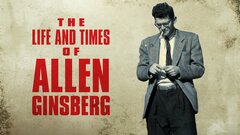
The Life and Times of Allen GinsbergStream
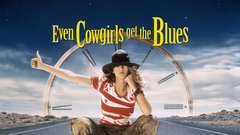
Even Cowgirls Get the Blues

Wax, or the Discovery of Television Among the Bees
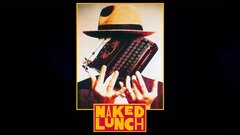
Naked Lunch
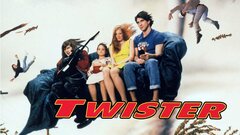
TwisterStream
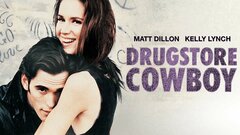
Drugstore CowboyStream

Ladrones de Droguerías

Home of the Brave

What Happened to Kerouac?

Decoder

It Don't Pay to Be an Honest Citizen

Poetry in Motion

Energy and How to Get It

Chappaqua

Towers Open Fire

Towers Open Fire






